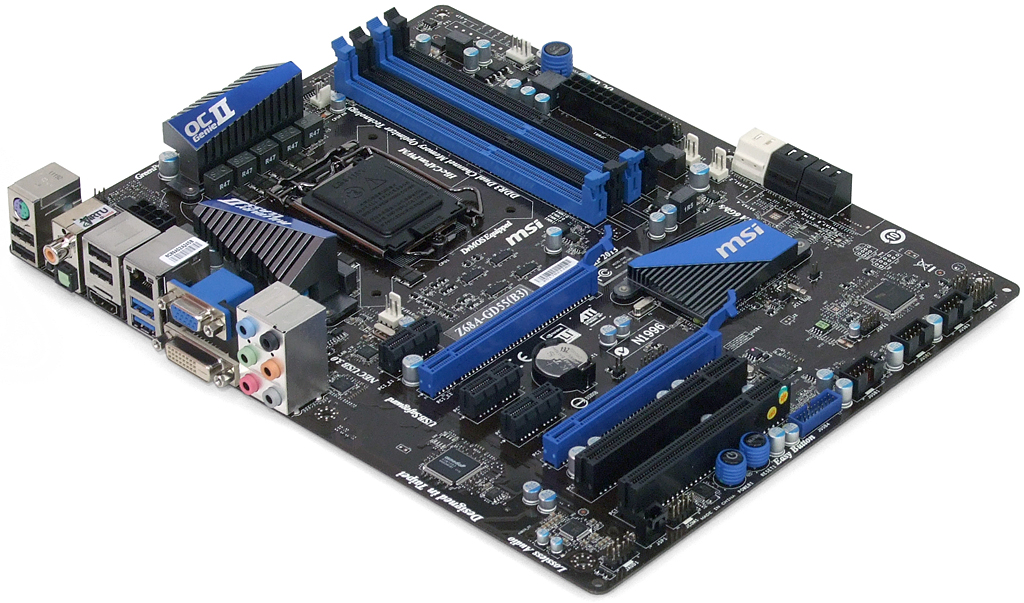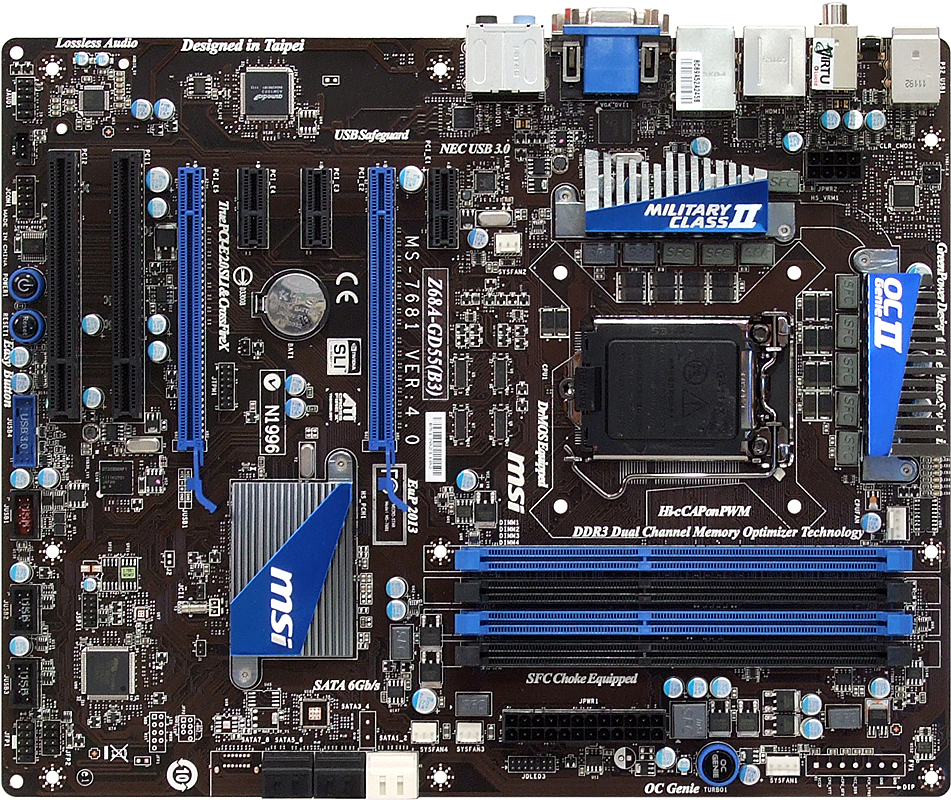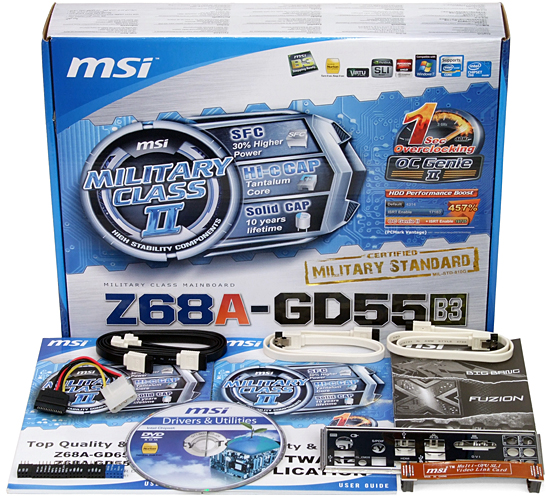From $100 To $160: Five Z68-Based Boards, Compared
Value-oriented system builders celebrate new-found performance and features as Intel continues pushing its mainstream platform towards the high-end. Today, we draw a line in the sand and consider five motherboards priced between $100 and $160.
MSI Z68A-GD55
MSI’s Z68A-GD55 is designed to compete directly against Gigabyte’s Z68XP-UD3, but it ended up priced $10 higher (before a mail-in rebate) at the time this story went live. The current MIR returns $20 to the buyer's pocket.
VGA and DVI ports consume more space than USB. MSI’s attempt to satisfy integrated, discrete, and integrated plus discrete markets force it to give up four USB 2.0 ports compared to Gigabyte. But the firm still manages to fit a legacy digital/coaxial audio jack into some of the space given up by its rival. The Z68A-GD55 is also the only motherboard in today’s roundup to include a CLR_CMOS button on the rear panel, which assists overzealous overclockers in their recovery efforts.
MSI supports the same x16/x0 and x8/x8 automatic pathway switching for single and dual graphics cards found on its competitor’s product, though the Z68A-GD55 adds a slightly more elaborate CPU voltage regulator. Tantalum capacitors and super ferrite chokes keep CPU cooler clearance in check.
A combination of front-panel and rear-panel USB 3.0 controllers also matches the competing product, though MSI ditches the FireWire and third-party SATA controller.
MSI does, however, add two features that some overclockers will surely find handy: a row of pins along the motherboard’s front edge allows experts to more easily monitor voltage levels, while amateur overclockers might also be tempted to push the “OC Genie” automatic overclocking utility button.
The Z68A-GD55 layout is nearly perfect, lacking any noticeable conflicts between cards and ports. Still, the front-panel audio jack is in the love-it or hate-it bottom-rear corner, where love or hate is dictated by case design and cable length.
MSI includes the same selection of cables as its competitor, but in different colors. Also included is a set of front-panel quick connectors, of which only the LED/power connector is really useful for most builders. This one-piece connector joins the individual cable ends supplied with most retail cases.
Get Tom's Hardware's best news and in-depth reviews, straight to your inbox.
-
compton I temporarily used a Biostar TH67+ 1155 mobo until I picked up my new board. After seeing the description of the Z chipset's Graphical UEFI I checked Biostar's website. It looks as though they're released the graphical UEFI for all biostar 1155 mobos.Reply
Now I just wish Intel would do the same -- can't they just rip off Asus's UEFI implementation? -
johnnyb_27 Why not use the MSI's Z68A-G65 instead of the MSI's Z68A-G55? They were the same price but now the drop MSI's Z68A-GD55 to 154 before rebate.Reply -
hatethisbull 90% of this article could've been compressed into the summary page. I would've preferred to see comparisons between, say, a $70 h67 and a high-end z68. Instead of four pages of unsatisfying gaming benchmarks, how about focusing on board usability? Which of the boards have cheap PCI-E retention clips that are going to pop off on first use? Which ones will have blocked ports, etc.Reply -
The Greater Good vilenjanWhat about looks? The gigabyte board looks so meh, while the MSI board is sexy!Reply
Do you stare into your case whilst computing, or do you look at the monitor? -
aznguy0028 The Greater GoodDo you stare into your case whilst computing, or do you look at the monitor?I look into my case daily when I use the computer. There's a reason why there is a window, and hours of hard work for your perfect wiring job deserves much credit and to be stared at. Not to mention coloring schemes that matches your case/mobo pcb color/fan led colors/etc.Reply -
Crashman johnnyb_27Why not use the MSI's Z68A-G65 instead of the MSI's Z68A-G55? They were the same price but now the drop MSI's Z68A-GD55 to 154 before rebate.MSI picked the GD55 because it's SUPPOSED to cost $160. MSI did NOT pick the GD65 because it's SUPPOSED to cost $180. MSI's predictions from a few weeks back simply didn't pan out.Reply -
Crashman jerreddreddisn't it time we lost the PS2 port? and maybe even the DB15 VGA port also?Not PS/2, just VGA. They leave the Multi-I/O controller on the board for compatibility in other areas, so PS/2 is "free" and some people still use it at the high end.Reply
Some cheap monitors still use VGA, but these boards are not for the budget market! For VGA compatibility (for external capture devices and such) they could just use DVI-I and let the oddball user who needs VGA for that oddball purpose supply his own adapter.



